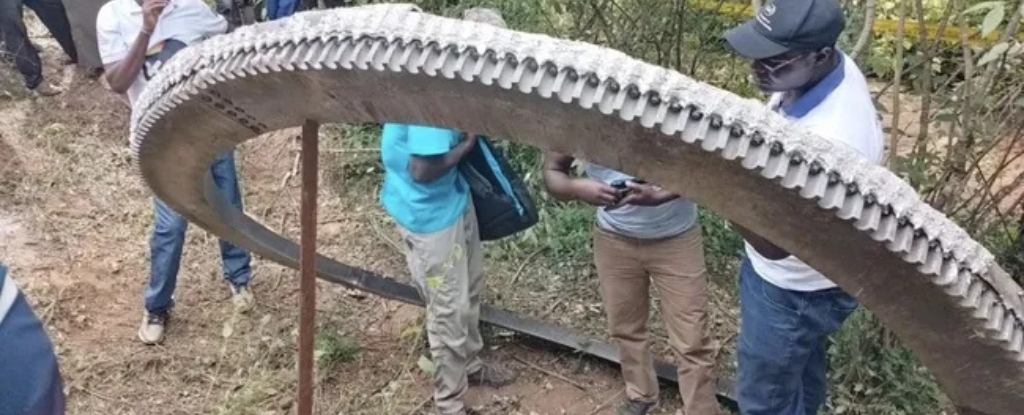On Wednesday, Mukuku Village in Kenya got an unexpected visitor from space.
At about 3 p.m. local time, a large metallic ring weighing about 1,100 pounds and measuring 8 feet in diameter crash-landed in the village, the Kenya Space Agency said in a statement.
The agency said no one was injured, and that the space debris poses no immediate risk.
Maj. Alois Were, an officer with the Kenya Space Agency, told Citizen TV, a Kenyan news station, that the ring-like object is “possibly from a rocket separation stage.”
Following the discovery of a metallic fragment of a space object in Mukuku Village, Makueni County, the Kenya Space Agency has issued the following statement. Read more for details on the incident, preliminary findings, and next steps. pic.twitter.com/n8gsvoKku4
— Kenya Space Agency (@SpaceAgencyKE) January 1, 2025
However, it’s unclear whose rocket the ring might belong to. Officials said they had collected pieces from the impact site for further analysis to determine its origins.
Were said that once they determine the owner, the space agency will use the “existing legal mechanisms under international law” to hold the person or organization accountable.
Space debris is usually designed to either burn up in Earth’s atmosphere before reaching the ground or land in unpopulated areas, like the ocean. This doesn’t always happen, though.
For example, in May 2024, a piece of SpaceX debris as large as a car hood crash-landed on a trail at a mountaintop resort just outside Asheville, North Carolina.
If it had landed on a person hiking the trail that day, it would have certainly killed them, Jonathan McDowell, an astrophysicist at the Harvard and Smithsonian Center for Astrophysics and leading space debris expert, told Business Insider in July.
To date, no one has died from space debris raining from the skies.
Perhaps the closest call was in March, when a two-pound piece of debris slightly smaller than a soda can fell from the International Space Station, crashing through a family’s roof in Florida. The family is suing NASA over the incident.
Ever since humans started launching objects into space in the late 1950s, there has been a risk that some might fall back to Earth in an unexpected place. As humans launch more objects into space, however, that risk is growing.
Between 2008 and 2017, global space organizations launched an average of 82 orbital rockets a year.
That number jumped to an average of about 130 launches a year between 2018 and 2022, according to the US International Trade Commission. In 2024, there were about 250 launches – a new record.
This poses risks on Earth and adds to a long-existing problem in space: space clutter and collisions. There’s a lot of trash in space, from dead satellites and astronaut gloves to tiny bits no larger than a grape.
These millions of bits of debris are racing around our planet faster than a bullet. It’s gotten so bad that about 1,000 warnings of possible impending collisions are issued daily to satellite operators, physicist Thomas Berger said in a press briefing at December’s annual American Geophysical Union meeting.
Berger said a major collision could generate “an unstoppable chain reaction of further collisions, ultimately resulting in a completely filled-up space environment.”
If that happens, it could make space unusable.
This article was originally published by Business Insider.
More from Business Insider:





